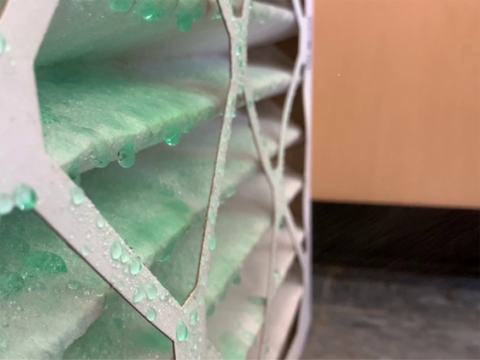Seamus Curran is commercialising the hydrophobic, water-based coating, which works by capturing liquids that encase virus particles, through Curran Biotech, a company he founded in Houston to develop hydrophobic coatings for fabrics. Filters treated with the coating are currently installed in one public building in New York City, USA, and Curran says that they should be used in conjunction with other measures to limit the spread of human coronavirus (covid-19), including the wearing of masks and the practising of social distancing.
High-efficiency air filters can trap some virus particles, but ventilation systems are designed to work with specific types of filters—to use a different filter, the ventilation system might need to be modified or even replaced entirely. Further, even high-efficiency filters do not trap all viruses. Curran says that testing at an independent laboratory, Water Lens of Houston, confirmed a filter treated with his coating captured airborne or aerosolised droplets of SARS-Cov-2 while, in comparison, it flowed through untreated filters of the same minimum efficiency reporting value (MERV) rating, which describes a filter’s ability to capture particles of various sizes.
In fact, Curran says, pollen and other particles that are not encapsulated in fluids still pass through the filter. He continues: “Our goal is not to change the rating of the filter. Filters are selected for the volume of the room they are in. Our goal is to go after the virus. If we do, we can get people back into buildings in a safer environment and get the economy moving.”
Earlier in 2020, Curran's laboratory developed a carbon-nanotube (CNT)-based material that is pliable enough to be woven into fabrics to create sensors that could serve as an early warning system for injury or illness(1).

